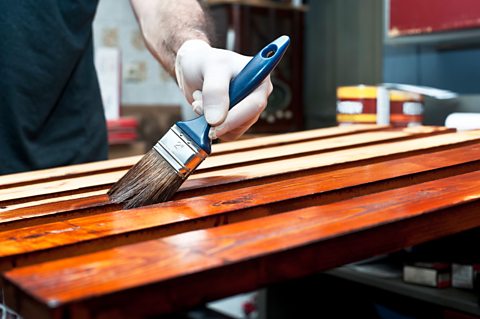Finishing woods
Wood is affected by different environmental elements such as heat and moisture. Different finishes are applied to wood to protect it from these elements and to make it more durable. This can be done by various different techniques or by a combination of techniques. Many of these finishes also help enhance its aesthetic qualities.
Some products used in finishing are poisonous and there are requirements that wooden items are coated with non-toxic coating if the end use is associated with food or children.
Finishing processes

When finishing wood, abrasives are commonly used first to remove excess material, to remove blemishes, and to smooth surfaces.
Common abrasives are glasspaper, sandpaper, and steel wool. Glass and sandpaper come in different grades depending on the amount of grit on the paper. The more grit, the more abrasion, and the smoother the surface finish.
Once the surfaces have been prepared, a finishing product is often added to add a layer of protection and to give a more pleasing appearance to the item.
Wax is used to apply a protective coating to wood. It can also change the colour of wood and make it smooth.
Varnish and stains can bring out the grain of the wood and also change the wood's colour and appearance. Typically several layers are applied to build up a good finish.
Paint can massively transform the look of a wood by drastically changing its colour. Built up in layers, it also provides protection fom the elements to the wood. Polish can also be applied to provide a protective coating.